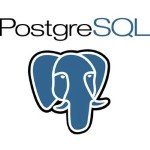Enterprise Java
-

How to Test a Spring AOP Aspect
1. Introduction Aspect-Oriented Programming (AOP) is one of programming paradigms that separates cross-cutting concerns as aspects. It complements Object-Oriented Programming…
Read More » -

Intro to Gradle Lint Plugin
Overview Maintaining clean, efficient, and maintainable build scripts is essential for any project that uses Gradle. The Java Gradle Lint…
Read More » -

PostgreSQL – Indexes
Indexes in PostgreSQL are data structures used to improve the speed of data retrieval operations on database tables. They work…
Read More » -

PostgreSQL – Recursive CTEs
Common Table Expressions (CTEs) are a powerful feature in SQL that allows you to create temporary result sets that can…
Read More » -

Manage Kafka Listeners Dynamically in Spring Boot
In contemporary event-driven architectures, proficient management of data streams is paramount. Apache Kafka stands out as a favored solution for…
Read More » -

Querydsl vs. JPA Criteria
Querydsl and JPA Criteria are widely used frameworks for creating type-safe queries in Java. Both offer methods to express queries…
Read More » -

Hibernate Subselect Annotation
1. Introduction Hibernate is an open source object relational mapping (ORM) tool that provides a framework to map object-oriented domain…
Read More » -

Retrieving Lists of Entities from a Database Using Hibernate
Hibernate is a powerful Object-Relational Mapping (ORM) framework for Java that simplifies the interaction between an application and a database…
Read More » -

Refresh and Fetch an Entity After Save in Spring Data JPA
The Java Persistence API (JPA) serves as a connector linking Java objects and relational databases, facilitating the smooth persistence and…
Read More »







